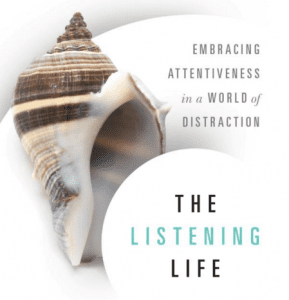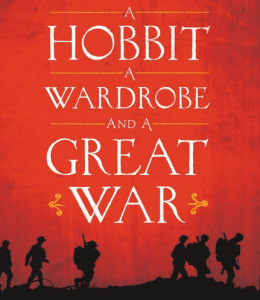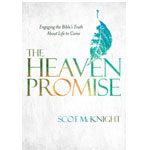This post is by Scott Bryant.
 A few weeks ago, I picked up Scot McKnight’s new e-book entitled Junia is Not Alone. Interestingly enough, the very week that I purchased his book, the latest issue of Entertainment Weekly arrived in my mailbox, complete with a cover caption that read: “The Girl with the Dragon Tattoo: How an Intense New Thriller Brought the World’s Coolest Heroine to Life.” This, of course, got me to thinking.
A few weeks ago, I picked up Scot McKnight’s new e-book entitled Junia is Not Alone. Interestingly enough, the very week that I purchased his book, the latest issue of Entertainment Weekly arrived in my mailbox, complete with a cover caption that read: “The Girl with the Dragon Tattoo: How an Intense New Thriller Brought the World’s Coolest Heroine to Life.” This, of course, got me to thinking.
Why would a magazine choose to describe Lisbeth Salander as the “coolest heroine?” What is it about Salander that has fascinated us as a society? What is it about her story that seems to ring so true? While the theories abound, I think the film’s director, David Fincher, gives us a great insight when he describes how they developed Salander’s look.
“Trish Summerville, the costume designer, and I talked a lot [about Salander’s appearance]. Trish has some of the most beautiful piercings and little studs in her nose, but that’s jewelry. By contrast, Lisbeth’s piercings … actually look painful and self-violating. We went back to that first idea of Sid Vicious[1] with a safety pin through his cheek and what it meant. That was not a way of saying, ‘Look at me, I’m special, I’m different, I’m committed.’ It was a way of saying, ‘Get away or you’re going to get blood on you.’”
You see, in many ways, Lisbeth Salander, as first conceived by Steig Larrsen, represents the next step in the cultural evolution of the female archetype. She is the post-feminist, warrior – the literary and celluloid sister of Lara Croft,[2] Buffy Summers,[3] Angelina Jolie,[4] and even the pre-pubescent Hit Girl. But is that all that there is to her character? Is she nothing more than an avenging angel? Again, Fincher and his team are right there to help us understand. [By the way, if you like the posts here click one or more of the share buttons below. They are very slow in showing accurate numbers, but it does help spread the word.]
“She’s not an avenging angel. We were never interested in that. We never felt this was Dirty Harry or Death Wish. She’s a person who has to deal with a lot of things … Psychologically, she has to work on two currents. One of them is saying, I don’t trust anyone, I don’t want to have anyone in my life, and I’m willing put on this garb that says, “Stay … away from me.’ And at the same time, it’s almost as if she’s in agreement with what everyone has always said about her, which is that she’s trash. She’s perfectly willing to look like refuse in order to be left alone.”
So who is Lisbeth Salander? She’s the new 21st century female role model. She’s a deeply scarred and troubled young woman, sexually aware, outwardly self-confident, inwardly bruised, and profoundly violent. In many ways, she’s a male fantasy – a millennial Cinderella who, while awaiting her knight in shining armor, has the courage and the moxie to take on all comers. Sure, she’s in need of rescue, but she’s not about to sit around twiddling her thumbs.
So with this cultural story as a background, I picked up McKnight’s new e-book, in which he lays out an argument regarding the neutering of the Apostle Junia. I found it astonishing that we, as a church, have not heard more about the lone female apostle in the New Testament, a woman described by the Apostle Paul himself as being “prominent among the apostles.”[5] Now I’m not going to bother you with the details of McKnight’s argument. Quite honestly, if you’re really that interested in this subject, you should just pick up the book for $2.99. It’s only 35 pages long; and it’ll excite your imagination in ways my reductionist summary never could.
But my point is simply this. We know that the cultural story is a damaging story that offers little in terms of real hope for young women in the world today. We know that sexualizing the body for the sake of marketing one’s self isn’t the answer. And we know that vengeance for all of the abuses suffered – both large and small – will never lead to closure or reconciliation.
But as McKnight so clearly illustrates, we also fail to tell a different story! We make sloppy hermeneutical decisions to violate the text and propagate the false idea that Junia was a man. We rarely speak on Huldah. We barely touch on Deborah. In fact, about the only thing we tend to offer is a vision of the “godly wife” from Proverbs 31 – a vision that is often carefully edited to omit the fact that she works outside of the home,[6] earning her own income[7] even as she built a public reputation that is so sound, that it’s praised by the leaders of the community.[8]
It has been said that nature abhors a vacuum. And I fear that if the church does not begin to seriously take up the task of offering a truly counter-cultural image of what a female disciple might actually look like, if the church continues to let silence be its guiding principle on this subject, than we are likely looking at a future where the vacuum will be filled – not by the likes of Junia, Hulldah, and Deborah, but by the likes of Lisbeth, Buffy, and even the young Chloe Grace Moretz – women left with no choice but to “kick ass.”[9]
Click here for a discussion on misogyny, Lisbeth and the Girl with the Dragon Tattoo.
[1] Sid Vicious was the iconic base player for the seminal punk band, Sex Pistols.
[2] Lara Croft is the fictional main character of the Tomb Raider video game series. First released in 1996, the character has become so iconic that it has spawned 11 video game sequels, two film adaptations, a series of young adult books and even a few academic monographs seeking to understand her influence.
[3] Buffy Summers is a fictional character first developed by Josh Whedon in a 1992 film entitled Buffy the Vampire Slayer. While Whedon’s film was essentially dead-on-arrival, he resurrected the character in a breakout series starring Sarah Michelle Gellar. The series ran for several years, and gave birth to a spin-off program entitled, Angel, as well as numerous non-canon material such as comic books, novels and video games.
[4] Angelina Jolie is an Oscar-winning actress who first came to international fame playing Lara Croft in the Tomb Raider series. Although she has flashed serious talent in numerous smaller projects, she is most well known for playing the type of woman described in this article. Films in which she is depicted in this fashion include: Gone in Sixty Seconds, Lara Croft: Tomb Raider, Mr. and Mrs. Smith, Wanted and Salt.
[5] Romans 16:7.
[6] Proverbs 31:24.
[7] Proverbs 31:16.
[8] Proverbs 31:31.
[9] One of the most shocking, and provocative examples of this new female archetype is represented by Chloe Grace Moretz in Matthew Vaughn’s film, Kick Ass. Here, the young Ms. Moretz plays a 10-year old girl who is trained to be a killer by her ex-cop father, played by Nicholas Cage. While the film was ostensibly about the titular hero played by Aaron Johnson, the phenomenon was built around Moretz’s breakout performance as a young girl, deeply scared, but able to take on all comers.















